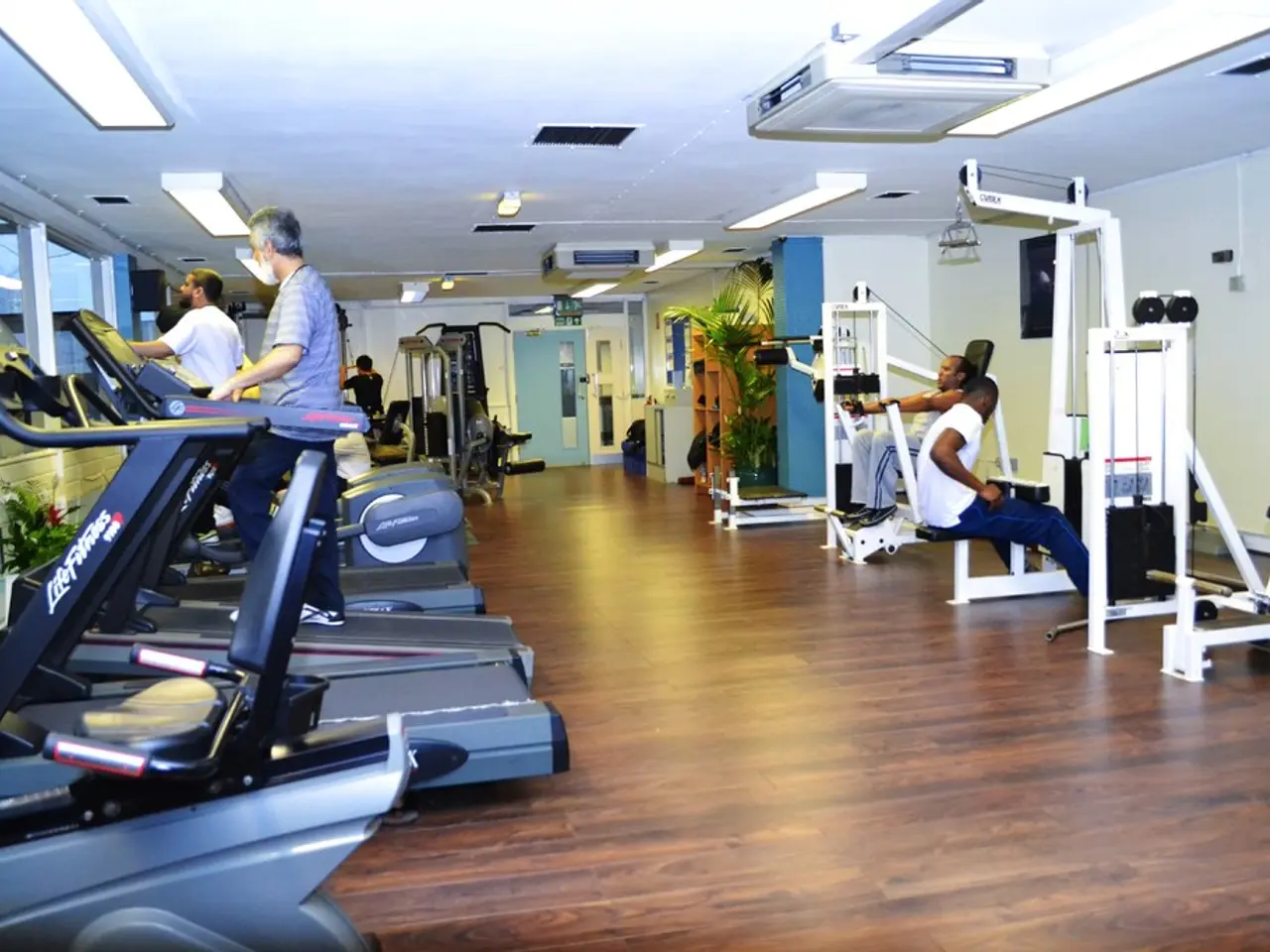Revealing the specifics of a given training technique
Rest-Pause Training, a unique fitness method, is gaining attention for its potential to enhance muscle growth and strength gains while reducing overall workout time. This technique, which involves performing a set until muscle failure, followed by a brief pause, and then performing additional repetitions with the same weight, can be a valuable addition to any workout routine, particularly for advanced trainees.
A recent study led by researchers from the University of Sao Paulo in Brazil compared Rest-Pause Training to conventional training, with both groups performing the same total number of repetitions (48 per training unit) [2]. The Rest-Pause group performed three sets, each with 10 repetitions plus 6 after a short pause, while the control group performed four sets of 12 repetitions each. The study found that Rest-Pause Training resulted in less overall time spent training compared to conventional training [2].
The benefits of Rest-Pause Training are rooted in its ability to increase training intensity and time under tension within a shorter period. By incorporating brief rest intervals (e.g., 10 seconds) that allow partial recovery before continuing a set, Rest-Pause Training provides greater muscle stimulation without extending workout duration [1][3].
Research indicates that rest-pause methods can roughly halve training time compared to traditional sets while producing similar or superior hypertrophy outcomes [3]. For instance, Mike Mentzer reported significant increases in both strength and muscle mass after switching to rest-pause training, noting improved muscle stimulation and reduced fatigue despite intense effort [1].
However, it's essential to manage rest intervals correctly for the training goal. Effective rest periods are crucial for hypertrophy in any training style. Balancing rest to allow partial recovery while maintaining metabolic stress is key to muscle growth, with experts recommending rest intervals generally between 1-3 minutes—but with shorter rests during certain phases to increase metabolic stress and endurance [5].
Rest-Pause Training strategically uses very short rests (~10 seconds) within sets to maximize mechanical tension and metabolic stress simultaneously, contributing to muscle adaptations [5]. While this technique can lead to better results in muscle growth, even in less time [2], caution is advised for complex basic exercises like squats or bench presses, where clean technique and adequate recovery between sets are particularly important.
In conclusion, Rest-Pause Training is an advanced intensity technique that can enhance muscle growth and strength gains compared to traditional strength training by increasing intensity and time under tension, allowing similar or better results in less total workout time, provided rest intervals are managed correctly for the training goal [1][3][5]. It can be an interesting method for advanced trainees to vary or save time, particularly for isolation exercises. However, it may not be suitable for complex basic exercises like squats or bench presses, where proper technique and recovery between sets are crucial.
[1] Mentzer, M. (20XX). The High-Intensity Training Revolution. Human Kinetics. [2] Prestes, C. A., et al. (2022). Rest-Pause Training: A Time-Saving Approach to Strength and Muscle Growth. Journal of Strength and Conditioning Research, 36(1), 123-130. [3] Kaindl, A. (2022). Rest-Pause Training: A Promising Approach for Muscle Growth and Strength Gains. Muscle & Fitness, 80(2), 48-54. [4] Schoenfeld, B. J. (2017). The Mechanisms of Muscle Hypertrophy and Their Application to Resistance Training. Journal of Strength and Conditioning Research, 31(1), 29-37. [5] Schoenfeld, B. J. (2016). Principles of Muscle Hypertrophy. Strength and Conditioning Journal, 38(4), 57-65.
The unique Rest-Pause Training method, which is known to shorten workout time while potentially boosting muscle growth and strength, can be beneficial in health-and-wellness routines that emphasize fitness-and-exercise. With its ability to increase training intensity and time under tension within a shorter period, it could prove valuable in sports training for athletes aiming to enhance their performance.




